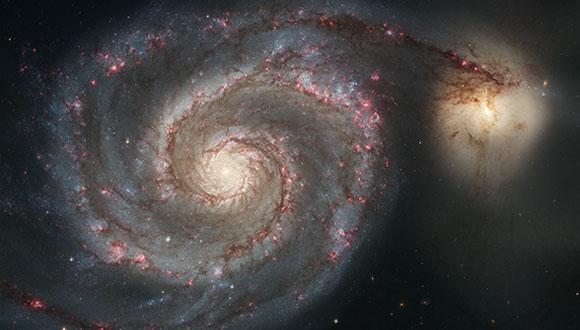Astronomy & Astrophysics Seminar
Sondos Mohsen & Tomer Reiss, TAU
Zoom: https://tau-ac-il.zoom.us/j/89636068691?pwd=YkVoWG9laTFPZHVENWovQ1FWczUvQT09
SN 2020bij - A Rare Type IIP Supernova with no CSM Interaction, High Velocities and Low Temperatures
Sondos Mohsen, TAU
Abstract:
Mapping how the progenitors of Type II supernovae (SNe II) influence the properties of their explosions is fundamental for understanding the final-stages of the evolution of massive stars. Type IIP SNe, the most common type of explosions, have been recently found to require some form of interaction with circum-stellar material (CSM) in order to reproduce the behavior of their early light curves. I will present our observations and analysis of a rare type IIP SN, SN 2020bij, characterized by high expansion velocities and low temperatures. We find that this SN can be explained without any CSM interaction using both an analytical and a numerical model for its early emission. This event raises the question of how rare CSM-free SNe are, and whether the lack of CSM is related to the high velocities and low temperatures.
High Ionization Lines in Powerful Local AGN
Tomer Reiss, TAU
Abstract:
Active galactic nuclei (AGN) mark the phases in which massive black holes experience significant growth. At high obscuration levels, identifying AGN in the optical-IR regime must rely on high-ionization lines, which may trace the key properties of the central engine that drives them. I will present my analysis of hundreds of spectra of narrow line AGNs from the BAT AGN Spectroscopic Survey (BASS) in order to examine the relation between the high ionization narrow emission lines, and specifically, the [Ne V]3426 line, and basic AGN properties, in an attempt to test whether the [Ne V] line can be used as a complete and pure tracer of AGNs and search for trends with accretion rate (including near the Eddington limit). The analysis includes spectral stacking for the undetected lines, to test the robustness of our results at lower flux levels. Our results show that the [Ne V] line can be seen even in the most obscured systems. It generally correlates with the power of the central engine, albeit with significant scatter. No strong trends between [Ne V] line emission and key AGN properties (BH mass, accretion rate, column density) or near the Eddington limit. And lastly, the [Ne V] line emission was detected in stacked spectra. Our findings illustrate the usability and limitations of using the [Ne V] line emission as an AGN tracer in high-redshift (IR) galaxy surveys.
Seminar Organizer: Dr. Iair Arcavi


